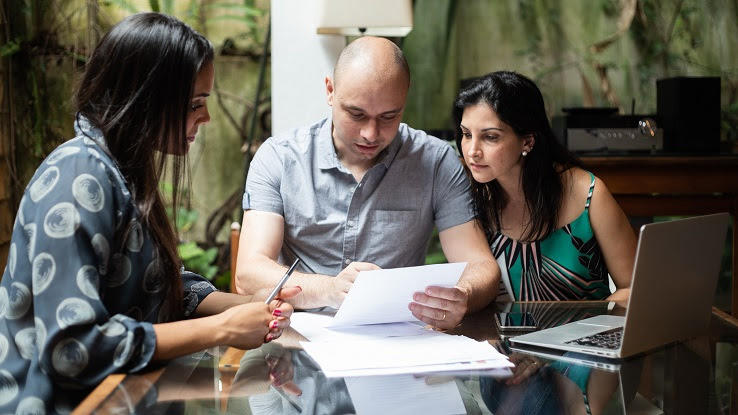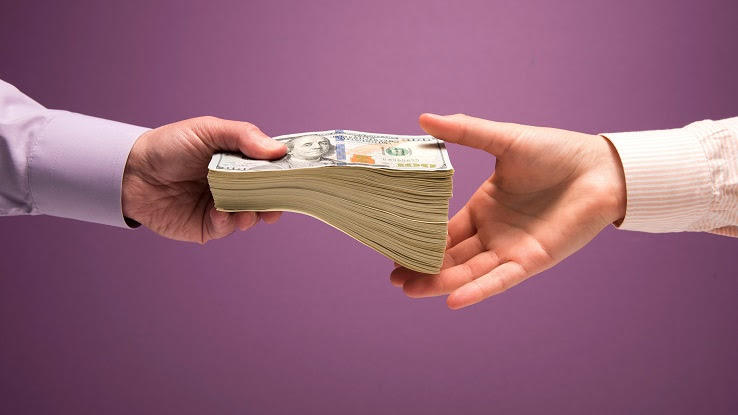What Situation Can the Communication Form Could Best Be Used

When you're buying a piece of property, there are many essential forms that you'll need to fill out or put together. Your mortgage application, proof of funds letter and letter of income verification are just a few of these important pieces of paperwork. Some of these documents might seem like a given — who'd try to buy a house without a mortgage application? — but others are just as vital even if they're not as well-known.
One of these less common (but equally important!) documents is called an earnest agreement form. This form is typically on the shorter side, but it takes care of a number of key tasks in the buying process. It helps sellers receive their deposits, protects buyers from deceptive property sales and ultimately contributes to the finalization of a real estate purchase. If you're in the market to sell or purchase a new home soon, take a look at what an earnest agreement form involves and how it can benefit you.

An earnest agreement form can be a part of most home and property sales. Essentially, this document outlines the details and agreements that make up the transfer of the property, including an outline of the buyer's earnest money deposit and information about the total purchase price. Both the buyer and the seller can create this form, and both parties can sign it.
An earnest agreement form is what allows a buyer and seller to document their shared terms of the transition of a property, and it can ultimately help them finalize the purchase and sale of the real estate. It also helps to protect money on both ends of the deal, including the buyer's deposit and the value of the seller's property.
What's on an Earnest Agreement Form?

Earnest agreement forms include information about the deposit and sale of a piece of property. These forms include the names of both the buyer(s) and the seller(s), as well as information about their addresses and other contact information. These forms should also incorporate details about any third parties that are assisting in the sale of the property.
Earnest agreement forms also clearly state the conditions of a sale, including the down payment amount, the final sale price of the property, the deadline by which the sale should be completed and what (if any) conditions will allow the buyer or seller to terminate the sale. These forms should also identify whether the buyer or the seller is responsible for sale-related costs, which typically include things like home inspections and appraisal services.
What Does an Earnest Agreement Form Accomplish?

The earnest agreement form is necessary before the buyer's deposit amount can be released to the seller. Before both groups complete and sign this form, the buyer will open an account where the earnest money (also known as the "good faith deposit") will be held until the terms of the sale are recorded on the earnest agreement form. The earnest money is the decided-upon deposit that the buyer submits in order to hold a specific piece of property for purchase.
Once the earnest agreement form is complete, the money in the buyer's deposit account goes to the seller. This money acts as both a deposit and is applied towards the down payment on the property.
Who Needs an Earnest Agreement Form?

Earnest agreement forms aren't like other property forms in that they're not legally binding. They don't require any sort of validation, signatures or stamp from a notary public. Instead, earnest agreement forms are courtesy documents for buyers and sellers, both of whom can protect their own funds to a better degree by completing one of these forms.
If you're purchasing a piece of property that hasn't undergone an inspection, an earnest agreement form can ensure that your money is protected in case the seller turns out to be deceptive about the condition of their property. On the other end, if you're selling a property, an earnest agreement form ensures that you can fully outline the conditions of the deposit and sale before the buyer commits. If the buyer backs out for a reason that's not outlined in the earnest agreement form, you as the seller can keep the deposit as compensation for the time and funds you may have already spent on the deal.
What Are Some Benefits of an Earnest Agreement Form?

The earnest agreement form is helpful for both buyers and sellers. For one thing, it may be a necessary piece of paperwork for actually releasing the buyer's deposit to the seller. Additionally, the earnest money deposit helps support a buyer by taking the property that they're interested in off the market so other potential buyers can't make offers. It also establishes the buyer's serious interest in the property, helping to push them to the top of the list of candidates for final purchase.
The earnest agreement form isn't a binding document like a lease, however. If a buyer wanted to backpedal on the purchase of a property due to poor inspection results, for example, they'd have the opportunity to do so before the sale is finalized.
How Do You Create an Earnest Agreement Form?

Fortunately, earnest agreement forms aren't too difficult to draft. These documents are typically short and to the point, outlining the most basic conditions of the sale and the release of the deposit. The steps that you can take to create an earnest agreement form include the following:
- Record the contact information, names and addresses of both the buyer(s) and the seller(s).
- Record the information about the third party that's managing the sale of the property.
- Identify the cost of the property and the amount of earnest money that'll be released to the buyer once the form is finalized.
- Identify the purpose of the earnest agreement in relation to the sale.
- Clearly state the conditions of the sale, including who's responsible for covering the payments for inspection and appraisal services.
- Identify the deadline for the property purchase (typically six months).
- Include a termination clause that identifies adequate reasons for termination (usually issues that arise during inspection) that allow the seller to receive their earnest money back.
- Have both parties sign and date the form.
There are various templates for earnest agreement forms online that may be suitable for your needs. These templates provide formal wording for the earnest agreement form, leaving blanks for information like the deposit/property cost and buyer(s)/seller(s) names. These can help to produce a polished version of the earnest agreement form with values unique to your purchase or sale, and a real estate agent can help you fill them out.
MORE FROM ASKMONEY.COM

What Situation Can the Communication Form Could Best Be Used
Source: https://www.askmoney.com/loans-mortgages/what-is-earnest-agreement-form?utm_content=params%3Ao%3D1465803%26ad%3DdirN%26qo%3DserpIndex

0 Response to "What Situation Can the Communication Form Could Best Be Used"
Post a Comment